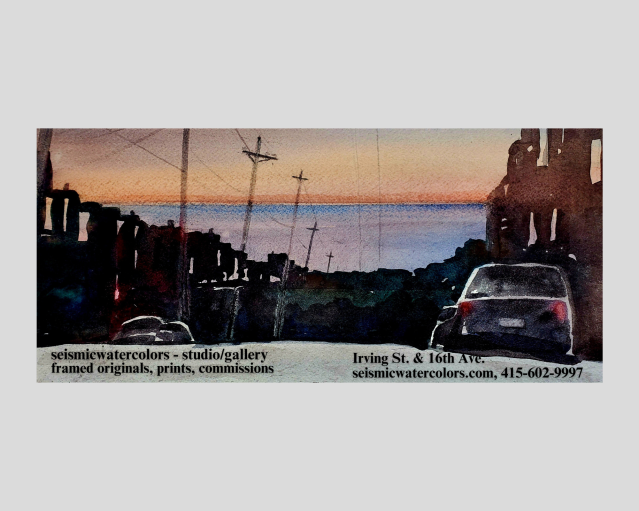A wild new Sea Cliff listing caught our eye this week, described as a “lovely Craftsman style” property that soars up to three stories and sprawls across over 2,100 square feet.
That may not sound very strange, but the notion of a tall, spacious Richmond Craftsman (that sells for nearly $2.7 million) is itself quite ironic, because historically speaking, this is exactly the kind of thing people wanted to get away from when building Craftsmans. Let’s do a little neighborhood housing history.
As we’ve written about before, around the turn of the 20h century, tastes were changing to deemphasize the baroqueness of the old San Francisco Victorians and embrace simpler and more direct forms of architecture.
Even in the move from Victorians to Edwardians, despite the similarities between the two styles (you could even call it a family resemblance…), we can see a preference for homes with less ornate facades and less circuitous interiors.
Hence the growing vogue in Craftsman homes, a distinctly American and Californian trend. Whereas older homes were deemed showy and artificial, Craftsmans were about the subtlety and nuance of nature and natural materials.
Even in a crowded neighborhood like the Richmond, these homes were meant to look like they’d be right at home in mountain rural settings, and to recall such natural retreats here in a metro center.

Elements like the low, angled roofs and shingles were meant to appear familiar and old-fashioned, and exterior texture features like beams, exposed rafters, brackets, and overhanging eaves emphasized workmanlike practicality.
Although it originally stemmed from the masthead of a magazine of all things, the Craftsman name also refers to carpenters and other handymen contractors who constructed such homes.
Don’t carpenters help build every kind of home? Well, yes; but increasingly, people associated elaborate homes with industrialization and the assembly line, since one thing that made those old Vics cheap is their parts could be mass-produced.
A Craftsman, on the other hand, was the kind of home a worker could build for himself from the ground up–or at least, that was the marketable fantasy of the time.
A blue-collar ethic, everyday modesty, and idealized dream of American workmanship over machine-driven decadence was the order of the day. Even the horizontal scale (old-school Craftsman were usually around one to one-and-a-half stories tall ) communicated humble roots.
Europe (particularly England) had similar popular styles at the time, like the Arts & Crafts boom. Two things sped up the spread of Craftsman styles in San Francisco particularly: First was (what else?) the 1906 earthquake, after which these homes seemed to offer speedy and simple methods for rebuilding .

The second was, ironically, a kind of architectural snobbery. We’ve written before about how architects and critics thought that those older homes were putting on airs, singling out the Richmond in particular as a neighborhood where houses were supposedly out of hand.
To be honest, the almost fetishized emphasis on blue collar authenticity as a commodity 100 years ago now seems very strange and, yes, not terribly authentic after all.
But the homes, particularly those dating to the original Craftsman boom, remain popular with buyers and critics alike, and many have aged beautifully into the modern era, where meditative simplicity has become a mark of luxury in itself.
Industry leaders in real estate marketing, market data, gossip, and news…theFrontSteps.com
Categories: Alexander Clark Real Estate, Architecture, History, Real Estate, Uncategorized
















